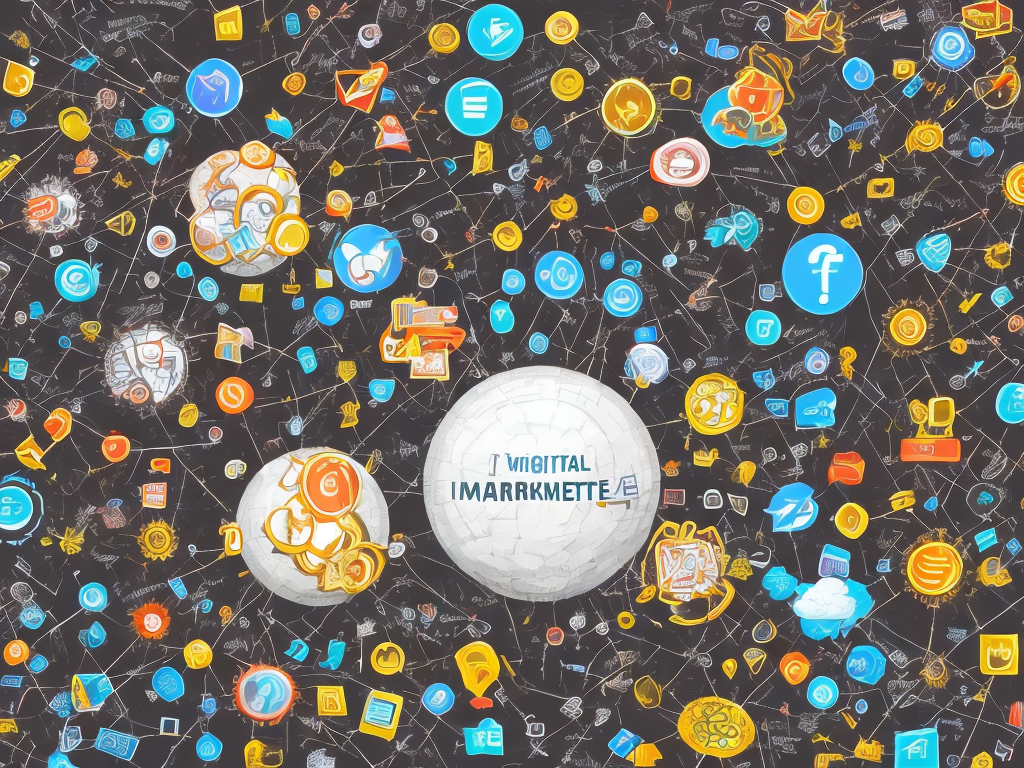
Difference Between Traditional And Digital Marketing
In today's highly connected era, marketing has evolved significantly from what it used to be just a few decades ago. Traditional marketing methods, such as television ads, billboards, and print advertising, are still widely used and can be effective. However, with the advent of technology and the internet, digital marketing has become increasingly popular and has revolutionized the way businesses reach and engage with their target audience. In this article, we will explore the key differences between traditional and digital marketing.
Traditional marketing, also referred to as offline marketing, encompasses all the conventional methods that have been used for decades to promote products or services. These methods include print advertising in newspapers and magazines, billboards, radio and television ads, direct mail, and telemarketing. Traditional marketing relies heavily on reaching a broad audience to generate brand awareness and increase sales. While it can be effective, it often requires a significant financial investment and may not yield immediate results.
Digital marketing, on the other hand, taps into the vast capabilities of the internet and digital technologies to promote products or services. It encompasses various channels and strategies that leverage the power of the internet and digital devices to connect with the target audience. These channels include websites, search engine optimization (SEO), search engine marketing (SEM), social media marketing, email marketing, content marketing, and mobile marketing. Digital marketing allows businesses to reach a highly targeted audience, engage with them in real-time, and track the success of marketing campaigns more effectively.
One of the major differences between traditional and digital marketing lies in their reach. Traditional marketing methods, such as television and radio ads, reach a broader audience but do not offer the same level of precision targeting as digital marketing. Digital marketing allows businesses to target specific demographics, interests, and behavior, ensuring that their message reaches the right people at the right time. This targeted approach helps businesses maximize their marketing budget by focusing on the most promising prospects.
Another significant difference is the cost associated with traditional and digital marketing. Traditional marketing methods often require a substantial financial investment. Television ads, for example, can be very expensive, and their reach is limited to the airtime that is purchased. In contrast, digital marketing can be more cost-effective, especially for small businesses with limited budgets. Online advertising platforms, such as Google Ads and Facebook Ads, offer flexible pricing options, allowing businesses to set their budget and pay per click or impression. This level of flexibility and cost control makes digital marketing accessible to businesses of all sizes.
Furthermore, the speed and immediacy of digital marketing set it apart from traditional marketing methods. With traditional marketing, it can take weeks or even months to plan and execute a campaign before seeing any results. For example, designing and printing flyers, distributing them, and waiting for responses from potential customers can be a time-consuming process. Digital marketing, on the other hand, allows businesses to launch campaigns quickly and see results almost instantly. Social media ads, for instance, can be created and published within minutes, and businesses can monitor the engagement and conversions in real-time.
The level of interactivity and engagement offered by digital marketing is also far superior to traditional marketing. Digital marketing channels, such as social media, allow businesses to have meaningful conversations with their audience, respond to feedback and inquiries, and build a loyal customer base. Traditional marketing methods, such as print ads or billboards, do not offer the same level of two-way communication and engagement. Digital marketing enables businesses to establish a direct connection with their audience, fostering relationships and building trust.
One of the unique advantages of digital marketing is the ability to measure and track its success accurately. Digital marketing platforms provide detailed analytics and reporting tools that allow businesses to monitor the performance of their campaigns, identify the most effective strategies, and make data-driven decisions. Traditional marketing methods, on the other hand, often lack the same level of measurability. It can be challenging to determine the exact impact of a television or print ad on sales or brand awareness. Digital marketing provides businesses with valuable insights into their marketing efforts, enabling them to optimize their strategies for better results.
In conclusion, the differences between traditional and digital marketing are significant and reflect the evolving landscape of marketing in the digital age. While traditional marketing methods still have their place and can be effective, digital marketing offers numerous advantages in terms of reach, cost-effectiveness, speed, interactivity, and measurability. Embracing digital marketing strategies can help businesses stay competitive and connect with their target audience in a highly targeted and meaningful way. As technology continues to advance, it is crucial for businesses to adapt and integrate digital marketing into their overall marketing strategy to achieve long-term success.
 Self-Instruct
Self-Instruct